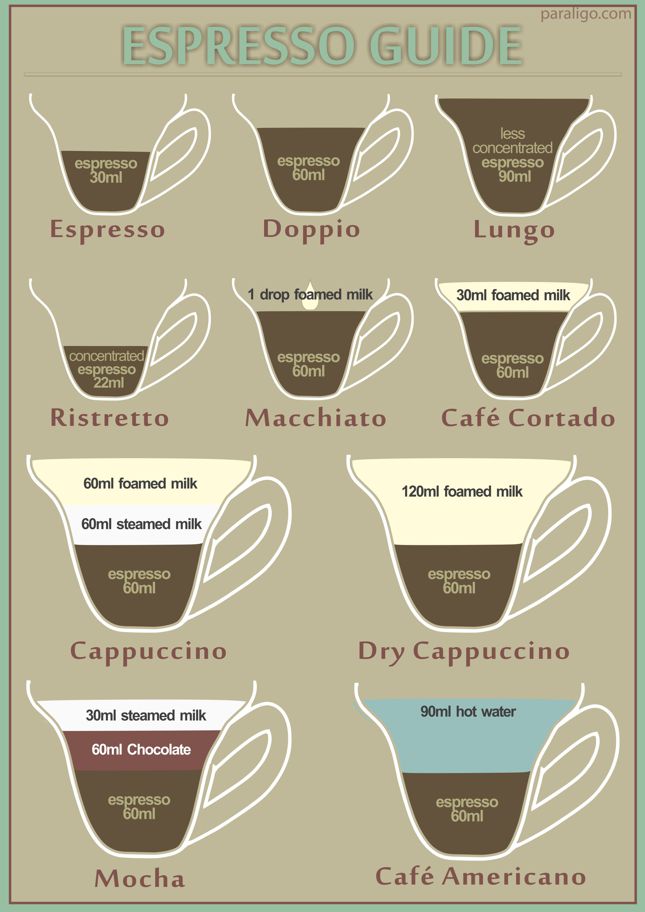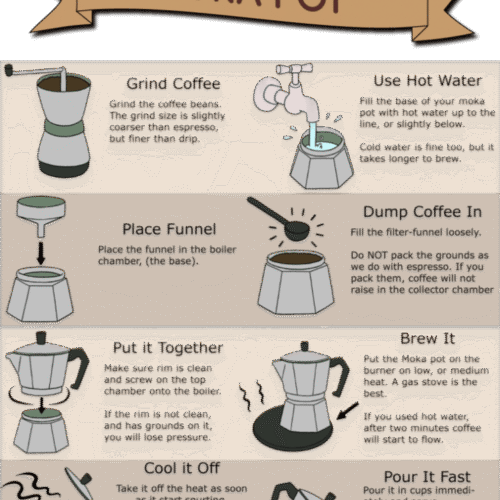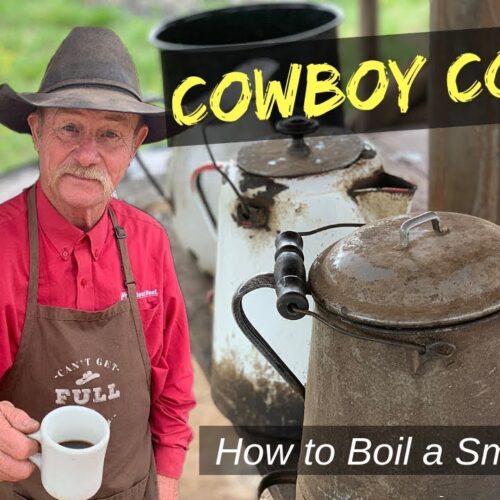To make espresso, use finely ground coffee and an espresso machine. Extract the coffee under high pressure for 25-30 seconds.
Espresso is a concentrated coffee brewed by forcing hot water through finely-ground coffee beans. It serves as the foundation for many popular coffee drinks like lattes and cappuccinos. Making a perfect espresso involves the right balance of coffee grind, water temperature, and pressure.
Fresh, high-quality beans make a significant difference in taste. Properly tamp the coffee grounds in the portafilter to ensure even extraction. The result should be a thick, rich shot with a layer of crema on top. Mastering espresso-making can elevate your coffee experience to new heights.
Introduction To Espresso
Espresso is a small but strong coffee drink. It’s made by forcing hot water through finely-ground coffee beans. This coffee style is rich, flavorful, and packs a punch. Let’s dive into understanding espresso better.
What Is Espresso?
Espresso is a concentrated form of coffee. It has a thicker consistency than regular coffee. The process uses high pressure to force hot water through the coffee grounds. This method extracts flavors quickly and efficiently. The result is a small, strong shot of coffee. Espresso is the base for many coffee drinks, like lattes and cappuccinos.
History Of Espresso
The history of espresso began in Italy. Angelo Moriondo invented the first espresso machine in 1884. This machine made coffee quickly by using steam and water. Luigi Bezzera improved the design in 1901. He added a portafilter and multiple brew heads.
In 1933, Achille Gaggia created a machine that used a lever. This produced higher pressure and better espresso. Gaggia’s design led to the modern espresso machine. Espresso became popular in cafes across Italy. Today, it is loved all over the world.
Choosing The Right Beans
Choosing the right beans is the first step in making a great espresso. The quality and type of beans can dramatically affect the taste of your espresso. In this section, we will discuss the different types of coffee beans and the importance of freshness.
Types Of Coffee Beans
There are four main types of coffee beans: Arabica, Robusta, Liberica, and Excelsa. Each type has unique flavors and characteristics.
- Arabica: Known for its smooth, sweet taste with hints of fruit and sugar.
- Robusta: Has a strong, harsh flavor with a higher caffeine content.
- Liberica: Offers a unique, woody taste. It is less common but interesting.
- Excelsa: Provides a tart, fruity flavor, often used in blends.
Most espresso blends use a mix of Arabica and Robusta beans. This combination balances smoothness with a rich, strong flavor.
Importance Of Freshness
Freshness is crucial for making great espresso. Fresh beans retain their natural oils and flavors.
Here are some tips to ensure your beans are fresh:
- Check the roast date: Always buy beans with a recent roast date. Ideally, within the past two weeks.
- Store beans properly: Keep them in an airtight container, away from light and heat.
- Grind just before brewing: Grind your beans just before making your espresso. This ensures maximum freshness and flavor.
Using fresh, high-quality beans is essential for a delicious espresso. By understanding the types of beans and the importance of freshness, you can elevate your espresso-making skills.
Grinding For Espresso
Grinding coffee beans is crucial for a perfect espresso. The grind size and type of grinder impact the flavor and quality. Let’s dive into the details.
Optimal Grind Size
The grind size for espresso must be fine. A fine grind allows the water to extract flavors quickly. The grind should feel like powdered sugar. Here’s a comparison table for clarity:
| Grind Size | Texture | Use |
|---|---|---|
| Coarse | Sea Salt | French Press |
| Medium | Sand | Drip Coffee |
| Fine | Powdered Sugar | Espresso |
Using A Burr Grinder
A burr grinder is the best tool for grinding espresso. Burr grinders produce consistent grind sizes. They crush the beans uniformly. Here are steps to use a burr grinder:
- Set the grinder to a fine setting.
- Measure the coffee beans.
- Pour beans into the grinder.
- Start grinding and collect the grounds.
Burr grinders come in two types:
- Flat Burr Grinder
- Conical Burr Grinder
Both types ensure a uniform grind. This results in a better espresso shot. Here’s a quick comparison:
| Type | Pros | Cons |
|---|---|---|
| Flat Burr Grinder | Even grind size | Can be noisy |
| Conical Burr Grinder | Less noisy | More expensive |
Choose a burr grinder that fits your needs. Remember, a good grinder is key to great espresso.

Credit: www.brew-coffee.ca
Espresso Machines
Choosing the right espresso machine can make a big difference in your coffee experience. With many options available, it’s essential to understand the different types and key features. This guide will help you decide which machine suits your needs.
Manual Vs. Automatic
Espresso machines come in two main types: manual and automatic. Both have their unique benefits and drawbacks.
- Manual Machines: These require skill and practice. You control every step, from grinding to brewing. They are perfect for coffee enthusiasts who enjoy the process.
- Automatic Machines: These are user-friendly. You press a button, and the machine does the work. They are ideal for busy individuals seeking convenience.
Key Features To Look For
When selecting an espresso machine, consider these key features:
| Feature | Importance |
|---|---|
| Pressure | Look for machines with at least 9 bars of pressure. This ensures rich and creamy espresso. |
| Grinder | A built-in grinder ensures fresh coffee grounds. Fresh grounds enhance flavor. |
| Steamer | A good steamer is essential for making lattes and cappuccinos. Ensure it produces fine, velvety foam. |
| Size | Consider your kitchen space. Choose a compact model if you have limited space. |
Remember, the right espresso machine can elevate your coffee experience. Whether you choose manual or automatic, ensure it has the features that matter most to you.
Tamping Techniques
Making the perfect espresso requires more than just good coffee beans. One crucial step is tamping. Tamping ensures the coffee grounds are evenly compressed. This helps the water flow through the coffee properly. Below, we’ll delve into the importance of tamping and how to do it correctly.
Why Tamping Matters
Tamping is important for several reasons. First, it creates a uniform surface. This lets water flow evenly through the coffee grounds. Uneven tamping leads to uneven extraction. This results in a bitter or weak espresso. Proper tamping also affects the pressure. It ensures the right resistance for the water to extract flavors.
Proper Tamping Methods
Follow these steps for perfect tamping:
- Distribute the Grounds: Spread the coffee grounds evenly in the portafilter.
- Level the Grounds: Use a leveler or your finger to even out the surface.
- Apply Pressure: Hold the tamper like a door handle. Push down with 20-30 pounds of pressure.
- Polish the Surface: Give the tamper a slight twist. This smooths out the top layer.
Here is a simple table to summarize the steps:
| Step | Description |
|---|---|
| Distribute | Spread the grounds evenly. |
| Level | Even out the surface. |
| Apply Pressure | Push down with 20-30 pounds of pressure. |
| Polish | Twist the tamper to smooth the surface. |
Using the right tamping techniques ensures a perfect espresso shot. Practice makes perfect. Keep refining your skills for the best results.

Credit: paraligo.com
Extracting The Espresso
Extracting the espresso is the most important step in making espresso. This process involves using high pressure to push hot water through finely-ground coffee. The result is a rich, flavorful shot of espresso. Let’s dive into the details.
Ideal Water Temperature
The water temperature is crucial for a perfect espresso. The ideal temperature is between 195°F and 205°F (90°C to 96°C). This range ensures the coffee extracts properly without burning.
| Temperature (°F) | Temperature (°C) |
|---|---|
| 195 | 90 |
| 205 | 96 |
Extraction Time
The extraction time should be between 25 and 30 seconds. This duration allows the coffee to release its flavors fully. Too short or too long affects the taste.
- Under 25 seconds: Under-extracted, sour taste.
- Over 30 seconds: Over-extracted, bitter taste.
Keep an eye on the timer to ensure consistency. Use a stopwatch or the timer on your espresso machine.
Common Mistakes
Making espresso can be tricky. Many people make common mistakes. These mistakes can ruin the taste. Here are some common errors to avoid.
Over-extraction
Over-extraction happens when you brew too long. This makes the coffee taste bitter. To avoid over-extraction, follow these steps:
- Use the right amount of coffee.
- Grind the coffee properly.
- Don’t brew for more than 30 seconds.
Check the grind size. It should be fine but not powdery. Use a timer to keep track of brewing time.
Under-extraction
Under-extraction happens when you don’t brew long enough. This makes the coffee taste sour or weak. To avoid under-extraction, follow these tips:
- Use enough coffee grounds.
- Grind the coffee finely.
- Brew for at least 25 seconds.
Ensure the water is hot enough. The ideal temperature is around 200°F (93°C).
Here is a table to help you with grind size and brewing time:
| Grind Size | Brewing Time |
|---|---|
| Fine | 25-30 seconds |
| Medium | 30-35 seconds |
Avoid these mistakes for a perfect espresso. Practice makes perfect. Keep trying!
Enhancing Flavor
Enhancing the flavor of your espresso can make your coffee experience delightful. Adding different elements can elevate your espresso’s taste and aroma. Here’s how you can enhance the flavor of your espresso.
Adding Flavored Syrups
Flavored syrups can add a sweet twist to your espresso. They come in many varieties like vanilla, caramel, and hazelnut. You can easily find these syrups in stores or online.
- Vanilla syrup: Adds a creamy, sweet flavor.
- Caramel syrup: Gives a rich, buttery taste.
- Hazelnut syrup: Adds a nutty, smooth flavor.
To use, simply add a spoonful of syrup to your espresso. Stir well to mix the flavors. This can make your espresso more enjoyable.
Pairing With Foods
Pairing your espresso with the right foods can enhance its flavor. Here are some great food pairings for espresso:
| Food | Flavor Profile |
|---|---|
| Chocolate | Sweet and rich |
| Pastries | Buttery and flaky |
| Cheese | Salty and creamy |
For a sweet treat, pair espresso with chocolate. For a breakfast option, try it with pastries. If you prefer savory, cheese can be a perfect match.
Experiment with different foods to find your favorite combination. This can make your espresso experience more delightful.

Credit: m.youtube.com
Frequently Asked Questions
How Do You Make Espresso At Home?
To make espresso at home, use finely ground coffee. Pack it into the portafilter tightly. Attach portafilter to the espresso machine. Brew the espresso for 25-30 seconds. Serve immediately.
Can You Make Espresso With Regular Coffee?
No, you cannot make true espresso with regular coffee. Espresso requires finely ground beans and high-pressure extraction.
How Do You Make Espresso Without A Machine?
To make espresso without a machine, use a French press or AeroPress. Boil water, grind coffee beans finely, then brew.
How Is Espresso Different From Coffee?
Espresso is a concentrated coffee brewed by forcing hot water through finely-ground beans. Coffee can be brewed in various ways. Espresso has a thicker consistency and stronger flavor compared to regular coffee. Coffee is less concentrated and has a milder taste.
Conclusion
Mastering the art of making espresso is simple and rewarding. With practice, your espresso will improve. Enjoy experimenting with different beans and techniques. Share your creations with friends and family. Happy brewing! Your perfect cup of espresso awaits. Start your journey today and savor the rich flavors.







